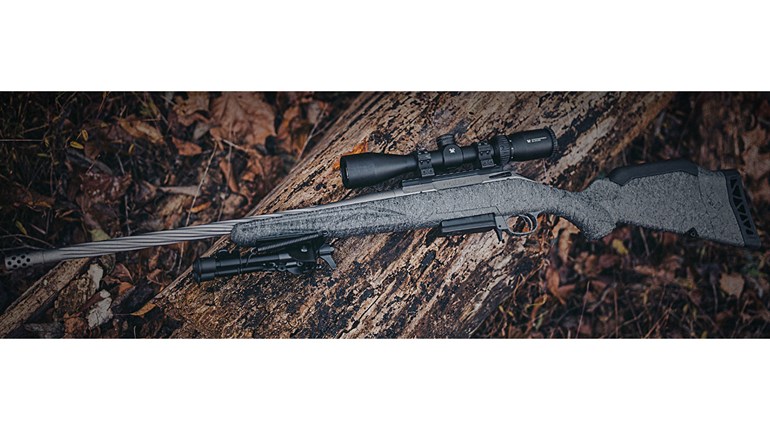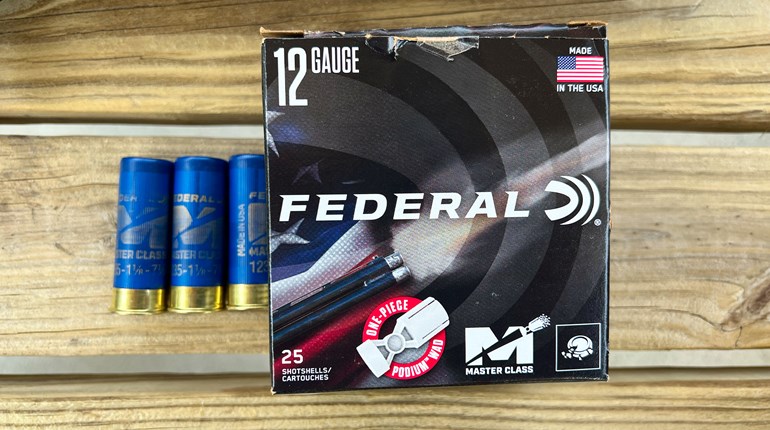
Here we have a pair of all-around 7mm cartridges which may be closer in performance than you think. The 7mm/.284-inch bore diameter is considered—along with the uber-American .30 caliber—to be one of the best all-around choices for a big-game hunter who wants just one rifle. The 7x57mm Mauser—a cartridge that initially set the military world on its ear, and later became the darling of sportsmen around the globe—brought us a selection of bullets that were perfectly adaptable for hunting game animals from the common deer species up to the big cats, and during the ‘experimental phase’ of cartridge development, the pachyderms.
Whether under the metric moniker, or under the .275 Rigby name, that cartridge put a whole lot of animals in the salt. Corbett took man-eating tigers, Bell collected hundreds of pounds of ivory, and those are just two examples of the famous hunters; in the hands of the colonialists, the 7mm bore diameter put meat on the table for decades.
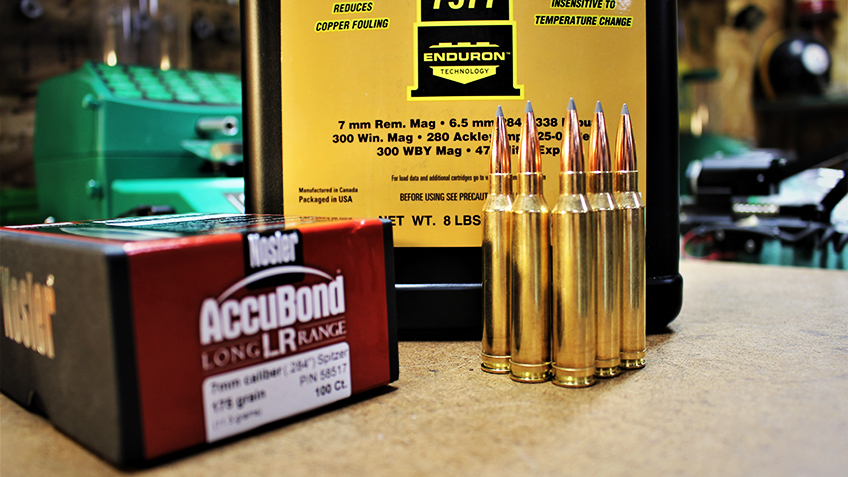
The .275 H&H Magnum, replete with the same belt that the .375 H&H wears, came onto the scene in the same year as the .375: 1912. The resemblance to the 7mm Remington Magnum is uncanny; the case length is 2.50 inches, the base diameter and belt is the same, but the .275 H&H has a bit more body taper than does the 7mm Remington Magnum. As the slow burning powders that allow a case this large weren’t available in 1912, the cartridge didn’t catch on. It took until 1962, when Remington released their 7mm Magnum, for this design to catch on, but it caught like wildfire.
It was Winchester who brought a trio of 2.50-inch magnums on the scene in the 1950s, in .458-inch, .338-inch and .264-inch, Norma brought out a .308-inch variety in 1960, and Remington brought out the 7mm in 1962. Remington also simultaneously released the now-famous Model 700 rifle; the two fit like a glove, and while I don’t feel the 7mm Remington stole much of the thunder of the .300 Winchester Magnum, which came along the next year, it certainly shoved the .264 Winchester Magnum off the stage. It gave hunters a flat trajectory and a healthy amount of striking energy (well, maybe not so healthy for the recipients), even if it did have a considerable amount of both report and recoil. It is an accurate cartridge, and still ranks high in the sales figures of ammunition companies each year.
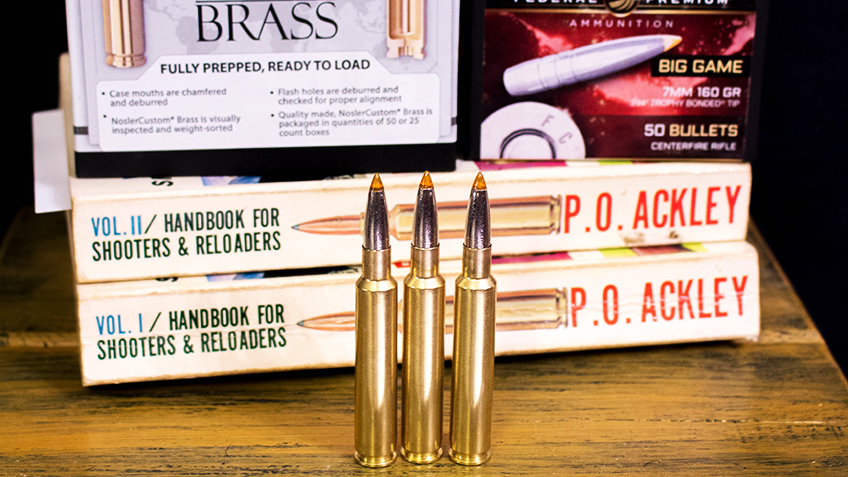
Parker O. Ackley was a gunsmith who developed a reputation for improving the design of a good number of our classic cartridges by removing body taper or increasing the shoulder angle, or both, in order to give greater case capacity. The ‘Ackley Improved’ cartridges have a fervent, if small, following in the hunting and shooting community. Ackley would improve cartridges as small as the .22 Hornet and .218 Bee, up through the .30-30 and .30-’06, up to the .338-’06, with his own designs running up to the .475 Ackley Magnum.
The .280 Ackley Improved is—you guessed it—the .280 Remington with the taper removed and the shoulder angle revised to 40 degrees. Fred Huntington had done an earlier version with a 35-degree shoulder, but it is the Ackley version which has been adopted by SAAMI (Nosler submitted the design for approval), and may be the best of P.O. Ackley’s designs.
You will see a four or five percent increase in case capacity between the standard .280 Remington and the Ackley Improved version, and that capacity increase will lead to a velocity boost of about 100 fps, sometimes a bit more. Now, that might not seem like a whole lot, and the .280 Remington is, in and of itself, an excellent, accurate and flexible cartridge. Ackley himself said the .280 was “itself a very good cartridge and one of maximum capacity for best results with a 7mm bore.” He felt the 7mm Remington Magnum was an overbore design.
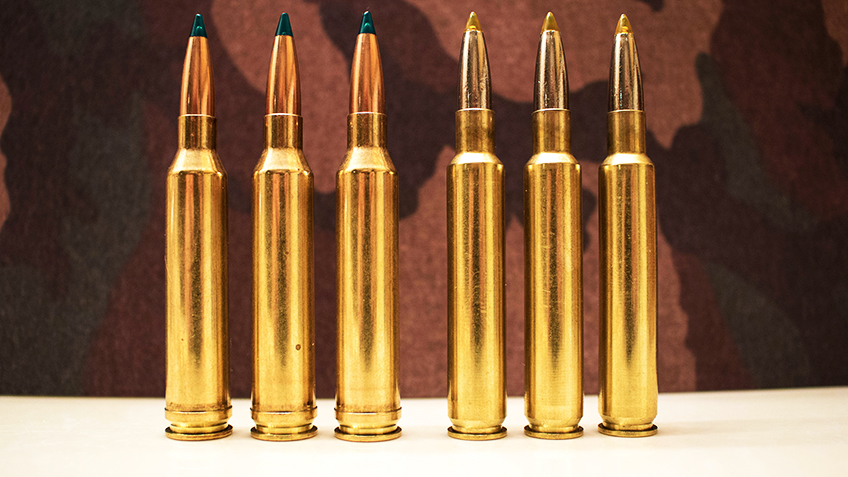
Nosler and Hornady load both 7mm Remington Magnum and .280 Ackley ammunition; looking at their data you’ll see a difference of 90 to 100 fps between the two, with the belted 7mm Magnum giving the higher velocities (with a 162-grain Hornady ELD-X, the 7mm Mag. runs at 2940 fps and the .280 AI runs at 2850 fps). It is quite easy to see that the 7mm Remington Magnum case is considerable larger than the .280 Ackley Improved, and with velocities running this close, you can infer that the .280 Ackley is a much more efficient design. I’ve been spending some time with a new Savage rifle in .280 Ackley Improved, and have loaded and shot a whole bunch of 7mm Remington Magnum, and can attest to the fact that the .280 AI offers a significant reduction in recoil.
So, which comes out on top? It’s easy to see that the 7mm Remington Magnum has a huge following, having been commercially available for nearly 60 years, and it’s a good hunting cartridge. Looking at it from a technical perspective, the .280 Ackley Improved is a much better design in that it runs on less powder, yet offers a performance level comparable to the 7 Mag. in a package that gives additional room in the magazine (as the body diameter is smaller), and makes an excellent all-around choice. My Model 110 rifle is light and accurate, and feeds like a dream in spite of the 40-degree shoulder.
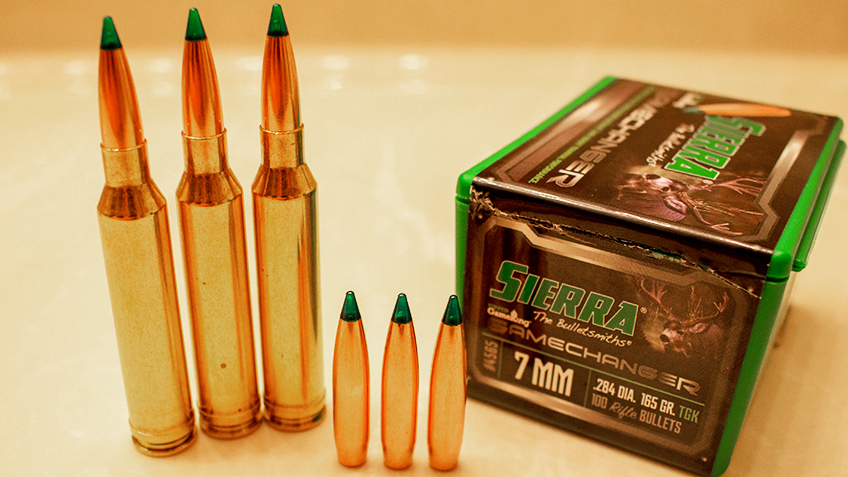
However, I also feel the .280 Ackley Improved suffers from ‘not-enough-rifles’ syndrome, though it seems that is beginning to change. Kenny Jarrett saw the wisdom of the cartridge long ago, and in addition to the Nosler and Hornady loads, Federal has just announced that they’ve added the cartridge to their lineup this year.
Will it unseat the 7mm Remington Magnum? Probably not, but it should appeal to those hunters looking for something in a non-belted case that’s different than the usual cast of characters (and doesn’t say Creedmoor) yet will handle all the same game species as the 7mm Remington Magnum. Yet, for now, the wide variety of 7mm Rem. Mag. ammunition gives it the definitive edge. With the current popularity of beltless cartridges, I think you’ll see the .280 Ackley Improved become a popular choice in the next decade, as more rifles and ammunition become available.
Looking for previous installments of our "Head to Head" series? We've got you covered.
• .404 Jeffery vs. .416 Rigby
• .243 Winchester vs. 6mm Creedmoor
• .300 PRC vs. .300 Win. Mag.
• .30-06 Springfield vs. .270 Winchester
• 6.5 Creedmoor vs. 7mm-08 Remington
• 8x57 Mauser vs. .318 Westley Richards
• .358 Winchester vs. .350 Remington Magnum
• .22-250 Remington vs. .220 Swift
• .270 Winchester vs. .270 WSM
• .26 Nosler vs. 6.5-300 Weatherby Magnum
• .458 Win. Mag. vs. .458 Lott
• 7mm Rem. Mag. vs. .300 Win. Mag.
• .243 Winchester vs. 6mm Remington
• 7x57mm Mauser vs. 7mm-08 Remington
• .25-06 Remington vs. .257 Weatherby Magnum
• .338 Winchester vs. .375 H&H Magnum
• .30-30 Winchester vs. .35 Remington
• .257 Roberts vs. .250-3000 Savage
• .270 Winchester vs. .280 Remington
• .35 Whelen vs. 9.3x62mm Mauser
• .416 Rigby vs. .416 Remington Magnum
• .308 Winchester vs. .30-06 Springfield
• .22 Nosler vs. .224 Valkyrie
• .300 Win. Mag. vs. .300 WSM
• .223 Remington vs. .22-250 Remington












